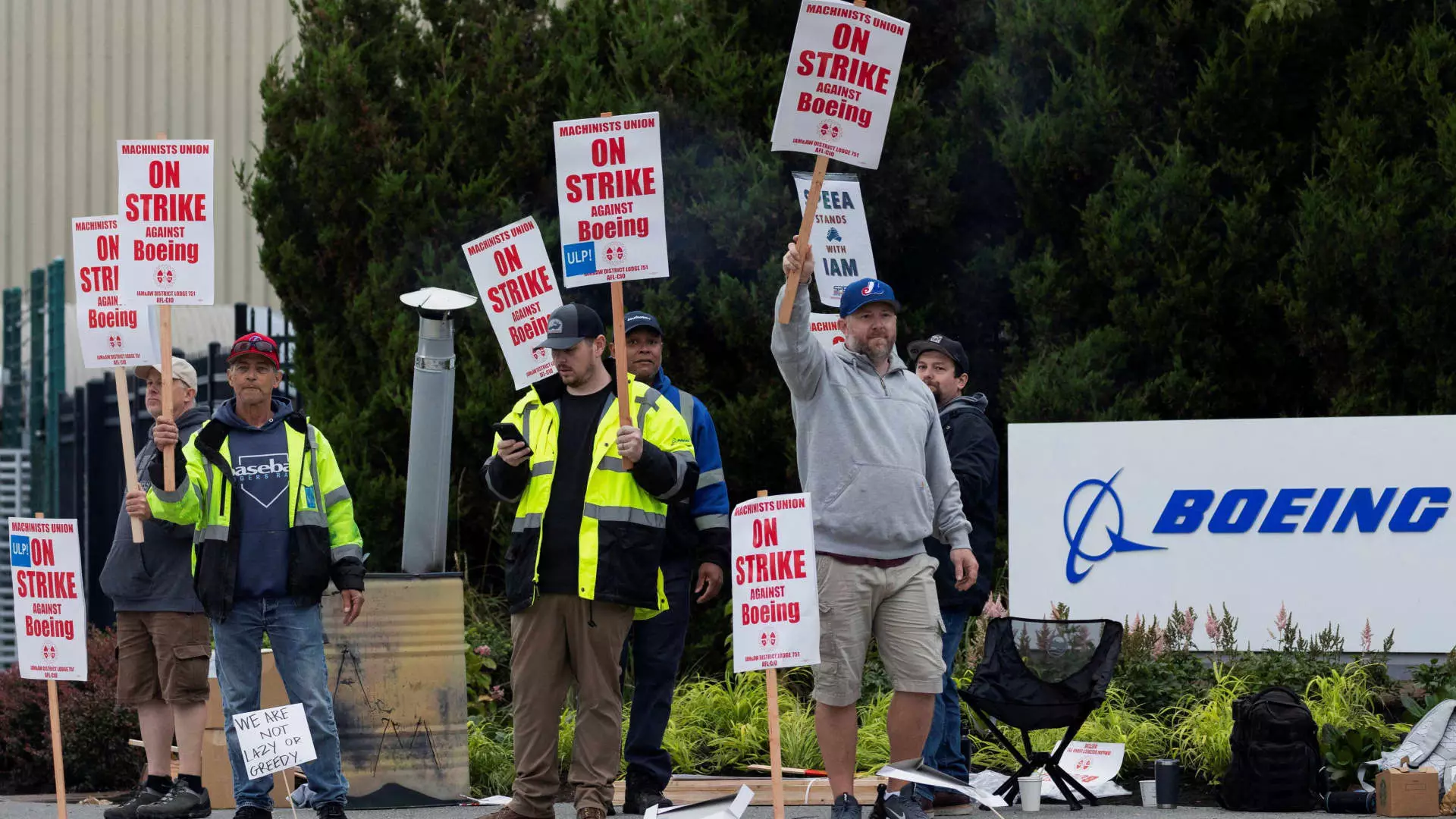The aerospace industry is currently embroiled in a turmoil that is placing significant financial strain on companies like Boeing. At the center of this upheaval is a machinist strike that began on September 13, which saw over 30,000 workers walk off the job in search of better pay and working conditions. With Boeing already grappling with a staggering $60 billion in debt and a cap on annual profits since 2018, the ramifications of this strike could be detrimental. Analysts estimate that the ongoing stoppage is costing the company approximately $50 million daily, a figure that can escalate dramatically if negotiations remain stalled.
Boeing’s urgent need for financial stability comes in the wake of other pressing issues, including a near-catastrophic incident involving one of its 737 Max planes. Having burned through about $8 billion this year alone, the consequences of this labor dispute are not merely academic. Should the strike continue, the company’s credit ratings could face a downgrade, adding to its already soaring borrowing costs—a scenario that could compound its existing challenges manifold.
While the numbers paint a dire picture for Boeing as a corporation, it’s essential to highlight the human element of this situation. Workers have described an unsettling balancing act: while pursuing better wages, they are also forced to consider side jobs like food delivery or furniture moving to cover basic living expenses. The substantial cost of living in the Seattle area, where Boeing’s primary factories are located, has exacerbated this dilemma. Reports indicate that median home prices have risen dramatically, compelling workers to reassess their financial viability in a city that has grown increasingly unaffordable.
Machinists have voiced a love for their craftsmanship and pride in their role in assembling airplanes. Yet, there exists a palpable frustration stemming from low wages compared to the soaring costs of everyday life. The internal strife is made apparent through personal anecdotes, like that of Jake Meyer, a Boeing mechanic who has budgeted his lifestyle to include temporary work while enduring the strike. In a labor-force environment increasingly characterized by skilled labor shortages, job retention is becoming a growing concern for technological sectors, including aerospace.
The tension between Boeing’s management and the machinists‘ union is riven with complexities. Despite the International Association of Machinists and Aerospace Workers‘ previous endorsement of Boeing’s last wage proposal, workers exhibited a clear discontent, favoring wage increases closer to 40%, compared to the company’s offer of 25% over four years. The dichotomy between management aspirations and workforce needs is stark.
In response to the stalemate in negotiations, Boeing’s new CEO Kelly Ortberg has attempted to implement cost-cutting measures, including temporary furloughs for tens of thousands of employees. These actions can be seen as preemptive strikes against the deepening budgetary crisis that a prolonged labor dispute would exacerbate. Ortberg underscored a commitment to reach an agreement „as soon as possible,“ providing a glimmer of hope that both parties could find common ground.
The current strife at Boeing reflects a broader trend in labor relations across multiple sectors, where unionized workers have successfully orchestrated strikes or leveraged threats thereof to secure better pay and conditions. The Biden administration’s involvement, prompted by Transportation Secretary Pete Buttigieg’s remarks, underlines a growing awareness of the intricate dynamics at play. The administration appears to be acting in support of both the workers and the company, pushing for a resolution that is sustainable in the long run.
Echoes of past strikes, specifically the 2008 labor dispute at Boeing, loom large in these conversations. Unlike today, the previous situation occurred during a period of relative financial health for the company, making the negotiations less fraught with the peril of bankruptcy or capital flight. The lessons learned from the past should inform both Boeing’s strategies and its labor force’s approach to negotiation, especially since the aerospace industry continues to navigate a tight labor market where skilled technicians are scarce.
As negotiations unfold between Boeing and its workforce, the clock is ticking. The stakes are higher than just labor conditions and pay; they entail the future viability of one of America’s largest manufacturers facing unprecedented challenges. Should constructive dialogue falter, the implications could reverberate through the supply chain and the wider economy, affecting countless associated industries. A resolution is imperative—not only for the financial health of Boeing but also for the workers who help build the very aircraft that define the company’s legacy. This situation serves as a critical case study of the complexities in modern labor relations, underscoring the importance of sustainable negotiations for both corporate stability and worker welfare.


Napsat komentář